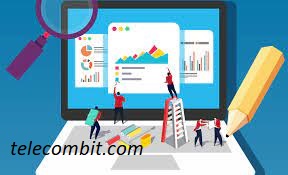A Technological Necessity for Businesses: Data Aggregation

In today’s data-driven world, businesses are inundated with a vast amount of information from various sources. The ability to harness and analyze this data effectively has become crucial for gaining a competitive edge. This is where data aggregation steps in as a technological necessity. Data aggregation involves collecting and consolidating data from diverse sources into a centralized repository, enabling businesses to derive valuable insights and make informed decisions. In this article, we will explore the significance of data aggregation for businesses, its benefits, and best practices for implementation

Understanding Data Aggregation
Data aggregation refers to the process of collecting and merging data from multiple sources into a unified format. It involves extracting relevant information, transforming it if necessary, and loading it into a central database or data warehouse. This consolidated data provides a comprehensive view of various aspects of a business, allowing for deeper analysis and informed decision-making.

PSD2 compliance in payment acceptance impacts online businesses and financial institutions. Solutions include strong customer authentication, secure APIs, and fraud prevention measures to meet regulatory requirements while ensuring a seamless customer experience.
The Benefits of Data Aggregation for Businesses
Enhanced Decision Making:
By aggregating data from different sources, businesses can gain a holistic view of their operations, customers, and market trends. This comprehensive perspective enables data-driven decision-making, as executives can access accurate and up-to-date information to formulate strategies, identify opportunities, and mitigate risks.

Improved Efficiency and Productivity:
Data aggregation eliminates the need for manual data gathering and reconciliation, saving time and effort for employees. Automation streamlines the data collection process, freeing up resources to focus on higher-value tasks. With aggregated data readily available, teams can work more efficiently and make data-backed decisions promptly.

Better Customer Insights:
Aggregated data provides a 360-degree view of customers by combining information from various touchpoints, such as sales, marketing, and customer support. This holistic understanding enables businesses to personalize customer experiences, identify cross-selling or upselling opportunities, and enhance overall customer satisfaction

Implementing Data Aggregation Best Practices
Define Clear Objectives:
Before embarking on data aggregation, it’s crucial to define clear objectives and determine the types of data required. This ensures that the aggregation process aligns with the organization’s strategic goals and focuses on collecting relevant information.

Identify Relevant Data Sources:
Identify the diverse sources of data within your business ecosystem. These may include internal systems (CRM, ERP), external databases, social media platforms, or IoT devices. Consider the quality, reliability, and relevance of each data source when selecting them for aggregation.

Ensure Data Quality and Consistency:
Maintaining data integrity is paramount in the aggregation process. Establish data cleansing and validation protocols to eliminate duplicate, inaccurate, or incomplete data. Consistent data formatting and standardization across sources are essential for accurate analysis.

Choose the Right Tools and Technologies:
Invest in robust data aggregation tools and technologies that can handle large volumes of data efficiently. Consider solutions like data integration platforms, data warehouses, or cloud-based services that offer scalability, security, and seamless integration with existing systems.

Implement Data Governance and Security Measures:
Establish data governance policies to ensure compliance, data privacy, and security. Define access controls, encryption methods, and data retention policies to protect sensitive information. Regularly monitor and audit data access and usage to maintain data integrity.

Real-World Examples of Data Aggregation
To illustrate the practical applications of data aggregation, let’s explore two industries:
Retail Sector:
Retailers can aggregate sales data, customer feedback, and social media sentiment to gain insights into consumer preferences, trends, and demand patterns. This information can guide inventory management, marketing campaigns, and product development strategies, leading to increased sales and customer satisfaction.
Healthcare Industry:
In healthcare, data aggregation can consolidate patient records, medical histories, and diagnostic results from various healthcare providers. This unifieddata allows healthcare professionals to make more accurate diagnoses, create personalized treatment plans, and identify trends in patient outcomes. Data aggregation in healthcare can also contribute to medical research, population health management, and improving overall healthcare delivery.

Conclusion
Data aggregation has emerged as a technological necessity for businesses across industries. By collecting and consolidating data from diverse sources, organizations can gain valuable insights, make informed decisions, and stay ahead in today’s competitive landscape. Implementing data aggregation best practices, ensuring data quality and security, and leveraging appropriate tools are essential for successful implementation. Embracing data aggregation empowers businesses to unlock the true potential of their data, drive efficiency, and achieve sustainable growth in the digital age.



